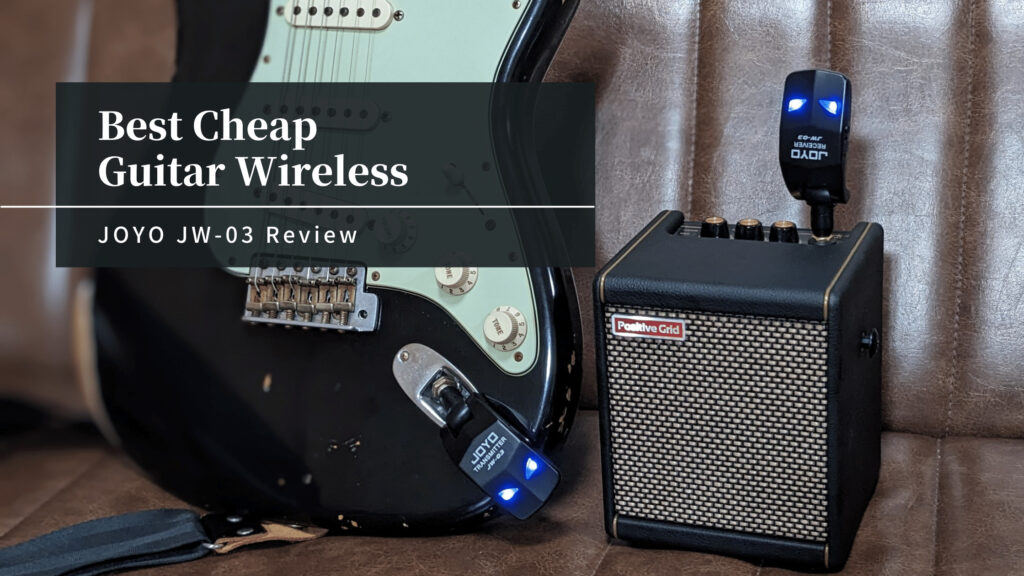This review is for those who:
- Are looking for an affordable guitar wireless system
- Find guitar cables to be a nuisance
- Are curious about the quality of affordable wireless systems
- Want to try out a wireless system
I am Yosh a music store clerk (@Yosh_Guitars), providing an honest review of the affordable wireless JOYO JW-03, which I use at home.
Pros
- Affordable wireless
- Easy to use without any setup
- Less interference
- No noticeable change in sound quality
- Can be used with any guitar
- Can be used with active pickups
Affordable Wireless
This is currently the most accessible and affordable guitar wireless system. The market price is just around $49.99. Other Chinese brand products (NuX, MOORE) cost over $100, and world-renowned brands like BOSS and LINE6 cost over $200 even for their cheaper models. This is one of the most affordable and accessible guitar wireless systems.
Easy to Use Without Any Setup
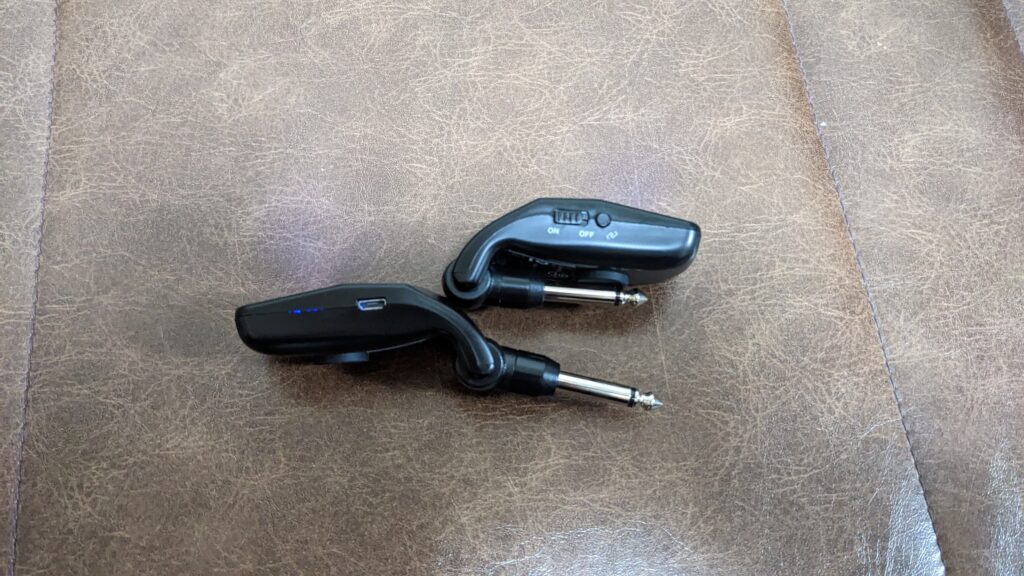
All you have to do is turn on the switch on the transmitter and receiver, and you can use it immediately. No complicated setup is required. If you experience interference or sound dropouts, you can switch to another channel.
Less Interference
Despite its low price, I was able to use it without any sound dropouts. In manual, There is a possibility of interference with other Wi-Fi or Bluetooth devices, so please use it away from wireless routers and wireless devices. However, I am able to use it without any sound dropouts, even while using the Bluetooth of the digital amplifier (Spark MINI) and placing my mobile phone at beside. However, I do not place it near a Wi-Fi router. It seems to work without any problems for normal home use.
No Noticeable Change in Sound Quality
I have no complaints about the sound being bad or the noise being noticeable in everyday use. If you alternate playing with a cable, you will notice a slight delay in the sound and a lower resolution, but at the volume of the amp used at home, I do not feel that the sound quality is degraded compared to a cable.
Can Be Used with Any Guitar
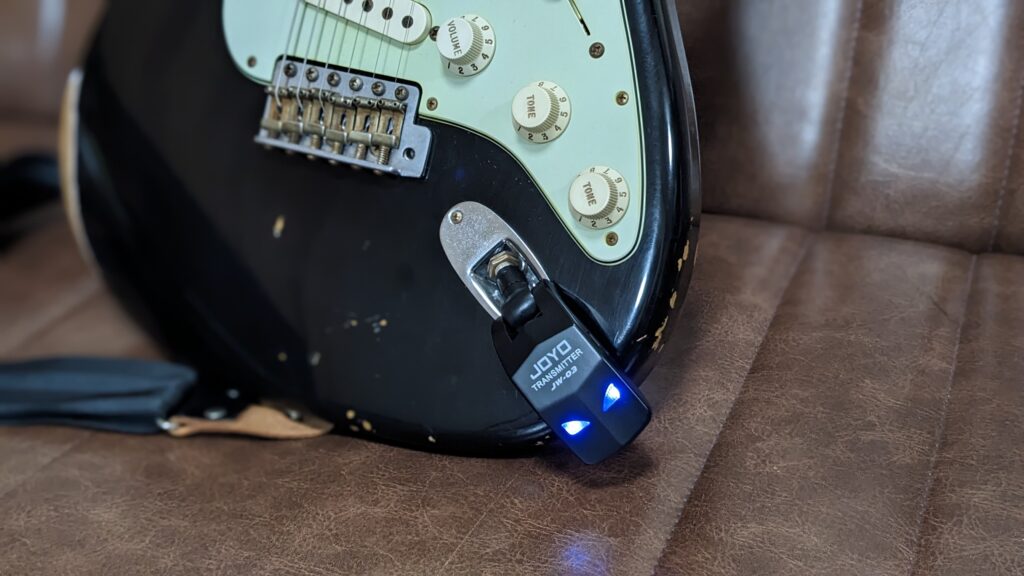
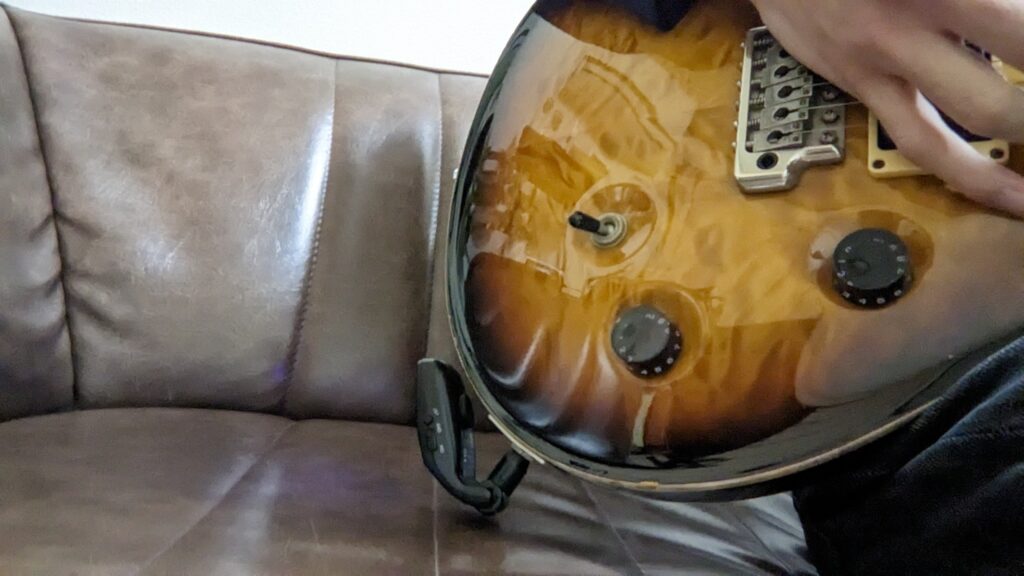
It can be used with any guitar, such as a Strat, Telecaster, or Les Paul. The plug part rotates 220 degrees, so you can use it without worrying about the shape of the jack or the presence of a tremolo arm. Even with side-jack guitars like Les Paul, you can fold it so you don’t have to worry about damaging it by pressing it against the floor. It is more convenient than slightly more expensive wireless systems like BOSS.
Can Be Used with Active Pickups
The official Japanese page has the following caution:
This product is recommended for passive pickups (output 3.3V or less). If you connect and use a product with a pickup output exceeding 3.3V, the JW-03 may break. Please refrain from using it with large output pickups or humbucker pickups and basses.
I use it with PRS’s HFS, which has a strong output even for passive pickups, and EMG81/60, which is an active pickup. As a result, there are no problems with sound cracking or cutting off. In my case, I have used it many times with the above pickups and have had no problems.
Cons
- Charging is cumbersome
- It’s hard to distinguish between the receiver and the transmitter
- Channel switching is manual
- There are concerns about using it live
Charging is Cumbersome
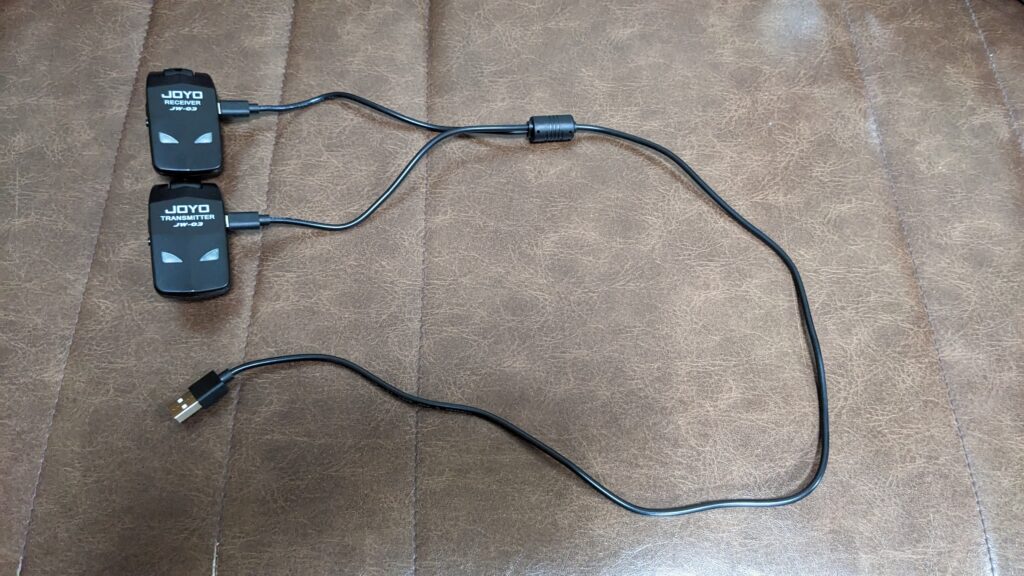
You need to insert a Micro-USB cable into each for charging. It would have been better if it was USB-C, and it would have been more convenient if there was a charging dock. However, it can be used for about 8 hours on a full charge, so there is no need to charge it frequently, and the included charging cable is a two-pronged cable, which is convenient because you only need one charger.
It’s Hard to Distinguish Between the Receiver and the Transmitter
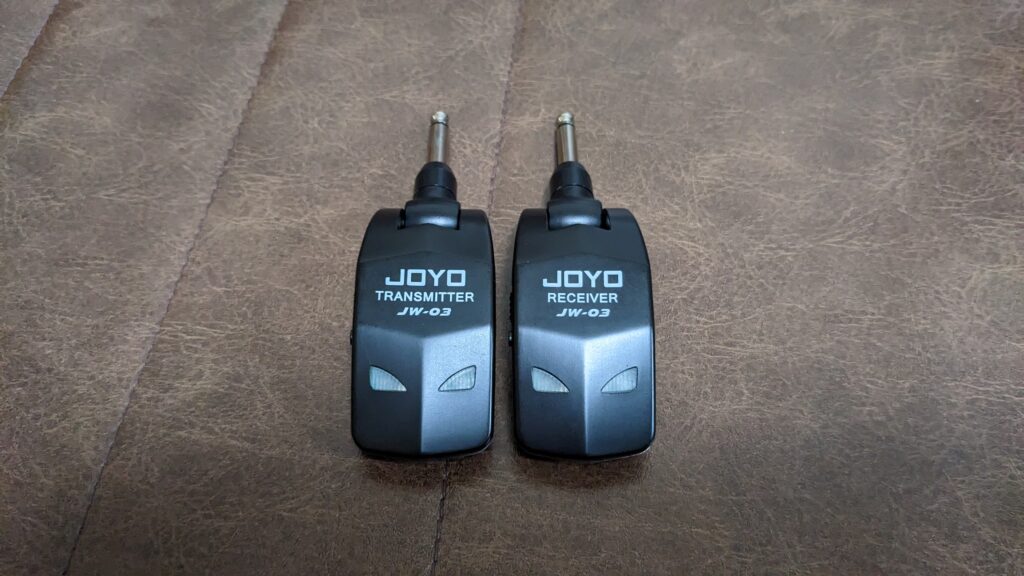
The shapes of the receiver and transmitter are the same, making them hard to distinguish. You have to distinguish them by the RECEIVER and TRANSMITTER written on the body. It might be a good idea to put a sticker or mark on one of them as it’s hard to tell at a glance.
Channel Switching is Manual
Depending on the environment in which you use it, interference may cause sound dropouts. High-end wireless systems automatically switch to a channel that does not interfere, but with the JW-03, you need to switch channels yourself.
There are Concerns About Using it Live
I highly praise it in the drawbacks section, but it’s with the caveat of “if you’re using it at home”. This is because it lacks the assurance of sound quality and operation (interference and distance). For band use, I use the SHURE GLDX16.
Comparison with X VIVE XV-U2
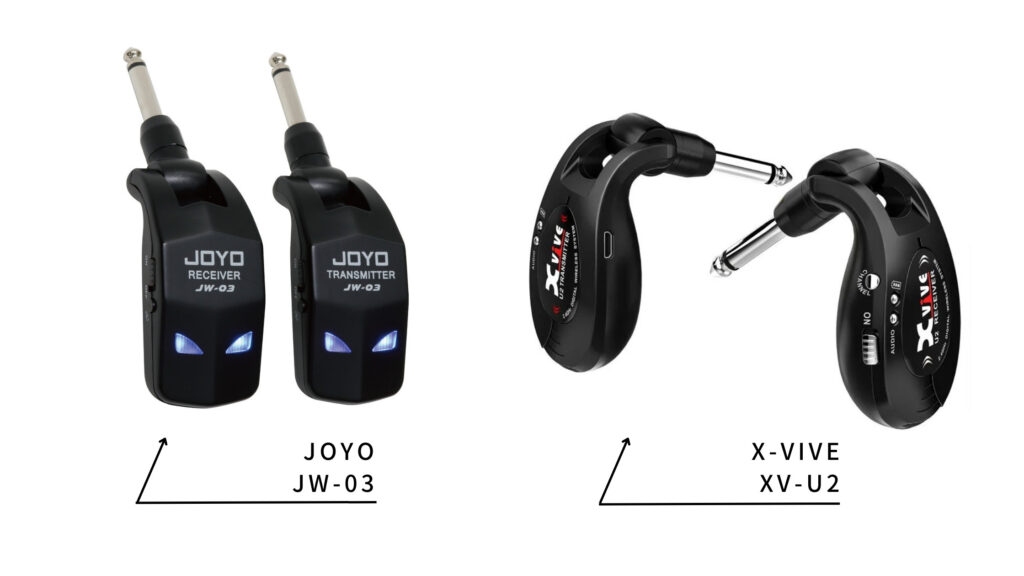
| JOYO JW-03 | X-VIVE XV-U2 | |
|---|---|---|
| Market Price | Around $50 | Around $100 |
| Operating Time | About 8 hours (full charge) | About 5 hours (full charge) |
| Sampling Rate | 48K/16bit | 48KHz/24bit |
| Latency | Less than 5ms | Less than 6ms |
| Frequency Response | 10Hz – 22KHz +-1dB | 20Hz – 20KHz |
| Distortion | Less than 0.02% (@1KHz-10dBFS) | Less than 0.05% (@1KHz-10dBFS) |
| Wireless Frequency Band | 2.4GHz ISM Band | 2.4GHz ISM Band |
| Operating Range | 20m | 30m |
| Maximum Simultaneous Use | 4 units | 4 units |
| Dimensions | 78 x 37 x 30mm (when folded) | Not disclosed |
| Accessories | USB charging cable | USB charging cable |
Comparing the most famous X-VIVE U2, which pioneered affordable guitar wireless, with JOYO JW-03. There is a price difference of about $50, but the functional difference is not that significant. JOYO is superior in terms of operating time, latency, frequency response, and distortion. X-VIVE is superior in terms of sampling rate and operating range. For home use, 20m is sufficient. It’s not possible to judge which one has a better sound based on these specifications. Rather, it’s not a level to worry about. Therefore, I bought the cheaper JOYO JW-03 and have no complaints.
JOYO JW-03: The Optimal Affordable Wireless for Home Use
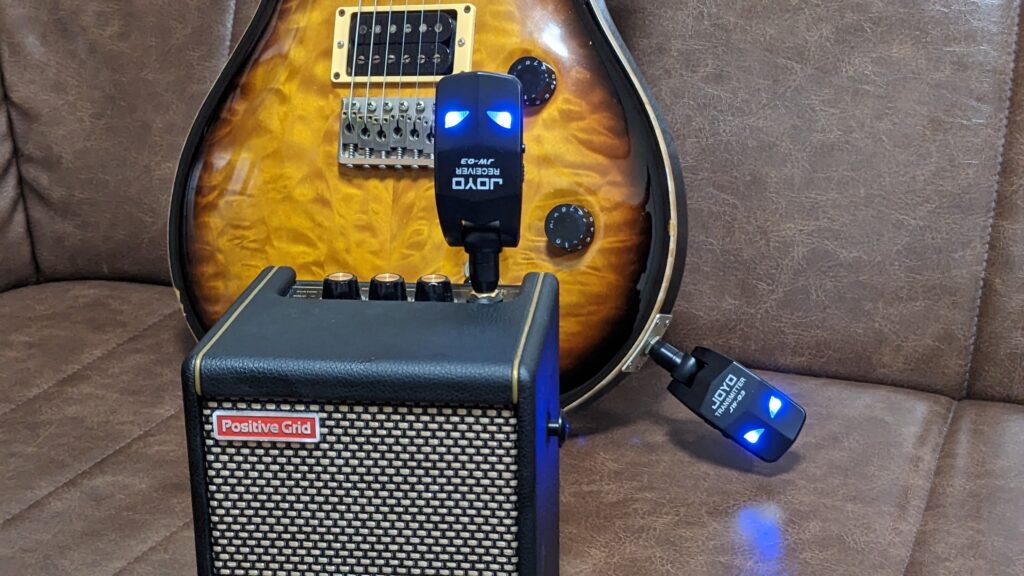
The benefit of using a guitar wireless system at home is that you don’t have to deal with the stress of cables. Without cables, your room stays tidy. You don’t have to worry about cables getting tangled or hitting something. Just turning on the switch allows you to start playing the guitar immediately, which makes it easier to make practice a habit. It’s not super high quality, but it’s good enough for home use. It’s cheaper than a high-end cable, and it’s a great affordable wireless system that works just fine. This is the one!

